
The Archdiocese of Otranto is a Latin archdiocese of the Catholic Church in Italy. The seat of the diocese is at Otranto Cathedral in the city of Otranto, Apulia. It is a suffragan of the archdiocese of Lecce.

The Diocese of Bovino is a Latin Church diocese of the Catholic Church in the civil province of Apulia, southern Italy. It is 23 mi southwest of Foggia. It was established in the tenth century, and was a suffragan of the archdiocese of Benevento. In 1986 it was merged into the Archdiocese of Foggia-Bovino. In 1980, the diocese claimed 23,500 adherents, served by 26 priests.

The Archdiocese of Lecce is a Latin Church ecclesiastical territory or archdiocese of the Catholic Church in Apulia, southern Italy. The diocese has existed since the 11th century. On 28 September 1960, in the bull Cum a nobis, Pope John XXIII separated the diocese of Lecce from the ecclesiastical province of Otranto and made it directly subject to the Holy See. In the bull Conferentia Episcopalis Apuliae issued on 20 October 1980, Pope John Paul II created the ecclesiastical province of Lecce, with the Archdiocese of Otranto becoming a suffragan diocese.

The Archdiocese of Pescara-Penne is a Latin diocese of the Catholic Church on the east coast in central Italy.

The Archdiocese of Chieti-Vasto is a Latin Church diocese of the Catholic Church which received that name in 1986, when the two separate dioceses, which had been governed by one and the same bishop, were united in one diocese. The diocese of Chieti had become the Archdiocese of Chieti in 1526, when promoted by Pope Clement VII. Chieti is about 8 miles (14 km) south-west of the Adriatic port city of Pescara.

The Diocese of Isernia-Venafro is a Latin Church diocese of the Catholic Church in Molise. It is a suffragan of the archdiocese of Campobasso-Boiano. In 1852 the historic diocese of Isernia was combined with the diocese of Venafro, to form the diocese of Isernia e Venafro. The seat of the present bishop is Isernia Cathedral, while Venafro Cathedral has become a co-cathedral in the new diocese.

The Diocese of Treviso is Latin Church ecclesiastical territory or diocese of the Catholic Church in the Veneto, Italy. It is a suffragan diocese in the ecclesiastical province of the metropolitan Patriarchate of Venice.
The Catholic diocese of Sarsina was a Roman Catholic ecclesiastical territory in Emilia-Romagna, northern Italy, seated in Sarsina, in the province of Forlì, some 32 km south-southwest of Cesena. The diocese was founded in the 5th century, and was suffragan (subordinate) to the archbishop of Ravenna. The diocese existed until 1986, when it was united with the diocese of Cesena.

The Diocese of Conversano-Monopoli is a Latin diocese of the Catholic Church in Apulia. It has existed since 1986, when the diocese of Monopoli was united with the historic diocese of Conversano. The diocese is a suffragan of the Archdiocese of Bari-Bitonto.
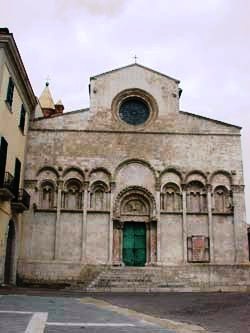
The Diocese of Termoli-Larino is a Latin Church diocese of the Catholic Church situated in the province of Campobasso, region of Molise. The commune of Termoli is an important regional seaport. The diocese has existed in its current configuration since 1986, when the diocese of Larino was suppressed and added to its territory. It is a suffragan of the archdiocese of Campobasso-Boiano.
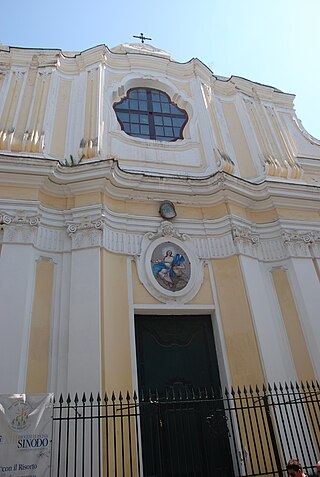
The Diocese of Ischia is a Latin diocese of the Catholic Church in Campania, southern Italy. It is a suffragan of the Archdiocese of Naples. The diocese comprises the entire island of Ischia, which contains seven communes divided into two circumscriptions. In 1743, the population was about 4,000. The city of Ischia constituted one single parish, with two religious houses of men and one of women. In 2018, the population of the town of Ischia was 20,118.
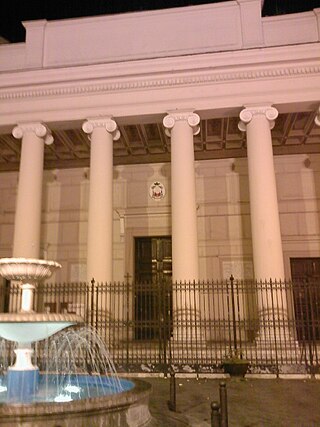
The Diocese of Acerra is a Latin diocese of the Catholic Church in Campania, southern Italy, eight miles east of Naples, in the area once called Terra Laboris (Liburia). It has existed since the 11th century. It is a suffragan of the Archdiocese of Naples.

The Diocese of Sessa Aurunca is a Latin diocese of the Catholic Church in southern Italy. Since 1979 it has been a suffragan of the Archdiocese of Naples.
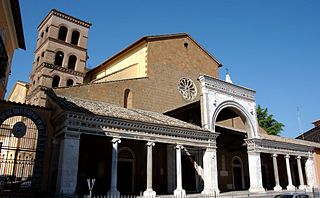
The Diocese of Civita Castellana is a Latin Church ecclesiastical territory or diocese of the Catholic Church in Latium, central Italy. It has existed in the current form since 1986, when the Diocese of Nepi e Sutri was united into the Diocese of Civita Castellana, Orte e Gallese. The Diocese of Gallese had been added to the Dioceses of Civita Castellana and Orte in 1805. The name of the diocese was shortened in 1991, in accordance with Vatican policies. The diocese of Civita Castellana is immediately exempt to the Holy See.

The Archdiocese of Catanzaro-Squillace is a Latin Church diocese of the Catholic Church in Calabria, has existed in its current form since 1986. In that year the Archdiocese of Catanzaro became a metropolitan see, and was combined with the diocese of Squillace.
The Italian Catholic diocese of Lacedonia, a suffragan of the archdiocese of Benevento in Campania, existed until 1986 when incorporated into the reorganized Roman Catholic Diocese of Ariano Irpino-Lacedonia.
The Diocese of Acerno was a Roman Catholic diocese based in Acerno, a distance of 68 km (42 mi.) from Naples in southern Italy, with the bishop's seat in Acerno Cathedral. Created in the 11th century, in 1818, the diocese was granted in perpetual administratorship to the archbishops of Salerno. In the reorganization of ecclesiastical provinces in 1986, Acerno was suppressed, to create the Archdiocese of Salerno-Campagna-Acerno.

The Diocese of Guardialfiera or Diocese of Guardia was a Roman Catholic diocese in Italy. The diocese was established in the second half of the 11th century, with seat of the diocese was located in the city of Guardialfiera in the Province of Campobasso in the region of Molise. In 1818, the diocese was suppressed, and its ecclesiastical territory was assigned to the Diocese of Termoli.

The Roman Catholic Diocese of Ortona a Mare e Campli was a Roman Catholic diocese in Italy, located in the city of Ortona, in the Province of Chieti in the Italian region of Abruzzo. In 1834, it was united with the Archdiocese of Lanciano to form the Archdiocese of Lanciano.
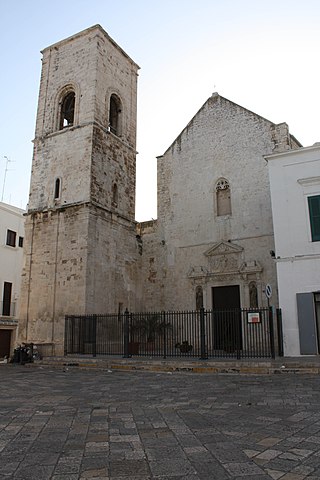
The Diocese of Polignano or Diocese of Polinianum was a Roman Catholic diocese located in the town of Polignano in the province of Bari, Apulia, southern Italy, located on the Adriatic Sea. In 1818, the diocese was suppressed, and its territory and Catholic population were assigned to the Diocese of Monopoli. The title, though not the diocese itself, was restored as a titular See in 1968.



















